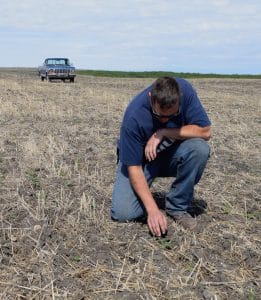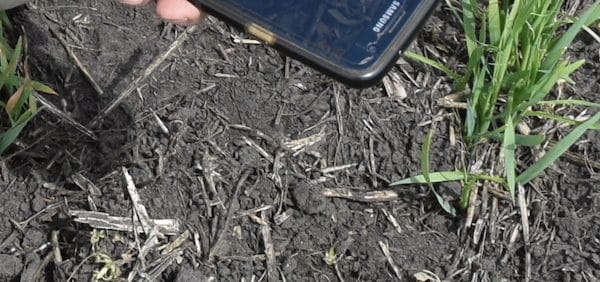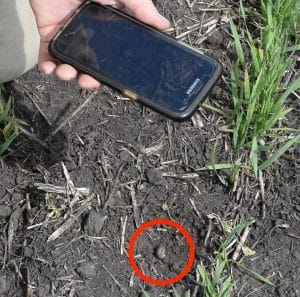Cutworms: Some fields have economic levels of cutworm feeding, evident by missing or clipped of plants and the presence of cutworms in the topsoil. How to scout. However, cutworms will start to pupate soon, so will be less of a concern. To help enhance our understanding of cutworms, please participate in an Alberta monitoring study. As AAFC research scientist Jennifer Otani says, cutworm outbreaks remain fairly unpredictable but we really need better information on densities, affected crops, and cutworm species. It’s going to take multiple years to do so, given the fact that we seem to have issues every 3 or so years, or it’s a different species in consecutive years. See the live Alberta 2019 cutworm map. Click here for identification and management for the six most common species.
Flea beetles: They continue to be an issue in some areas. The combination of windy days postponing sprays (and driving the beetles down to the stems), and slow crop development due to dry or cool or both has contributed to damage in some regions. Read more on why they seem worse this year.

Grasshoppers: Grasshoppers are often worse in hot, dry conditions. One big reason is because insects, as cold-blooded creatures, eat more and grow faster in hot weather. The other reason is that hot, dry weather limits fungal infection, one of the main threats to grasshoppers. In dry weather, a larger proportion of eggs hatch. Read more.
Insect monitoring: Diamondback moth catches are still low: Alberta Saskatchewan Bertha armyworm moth catches are just starting to ramp up (not yet to serious levels). Aster leafhopper catches have been very low.


